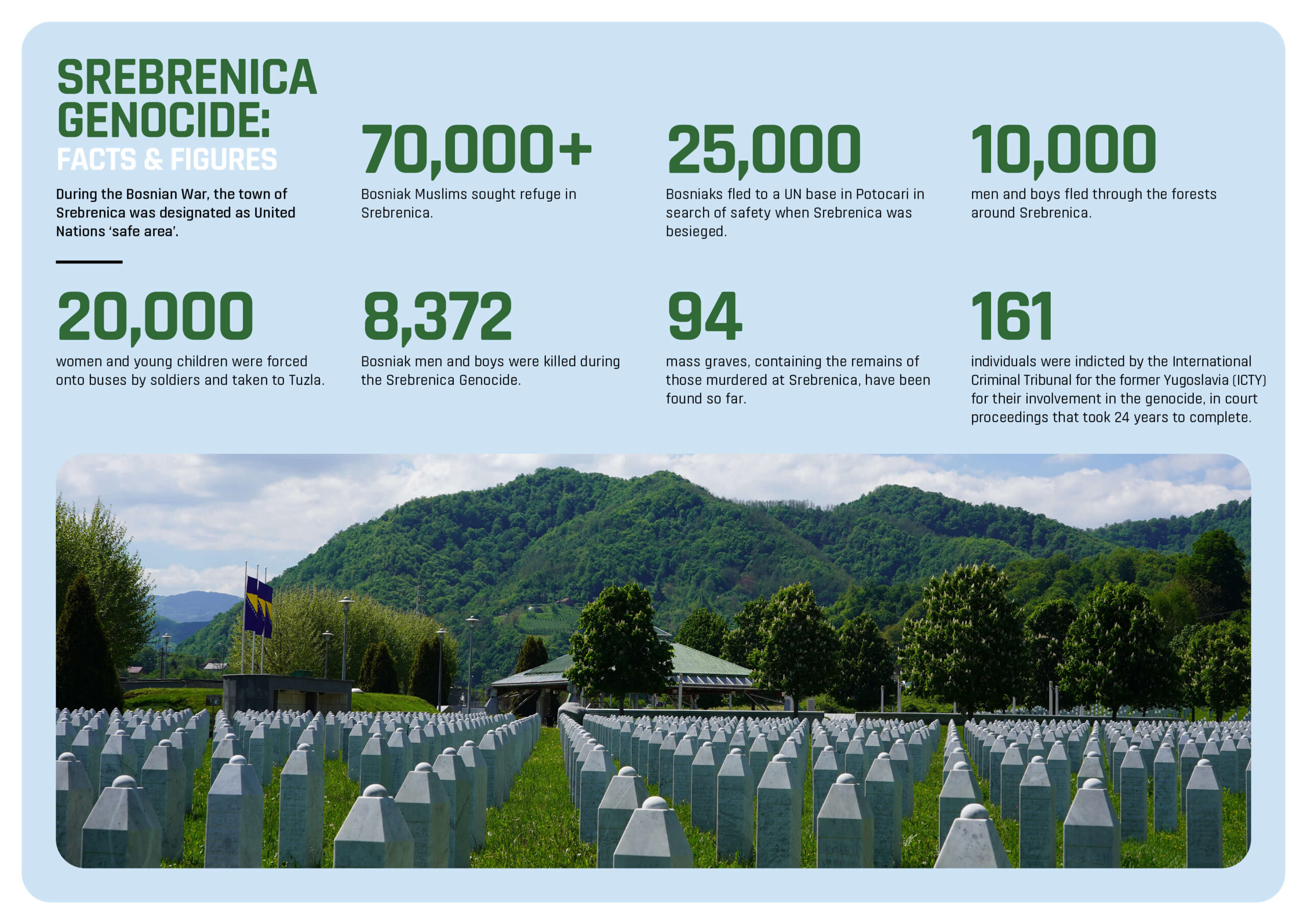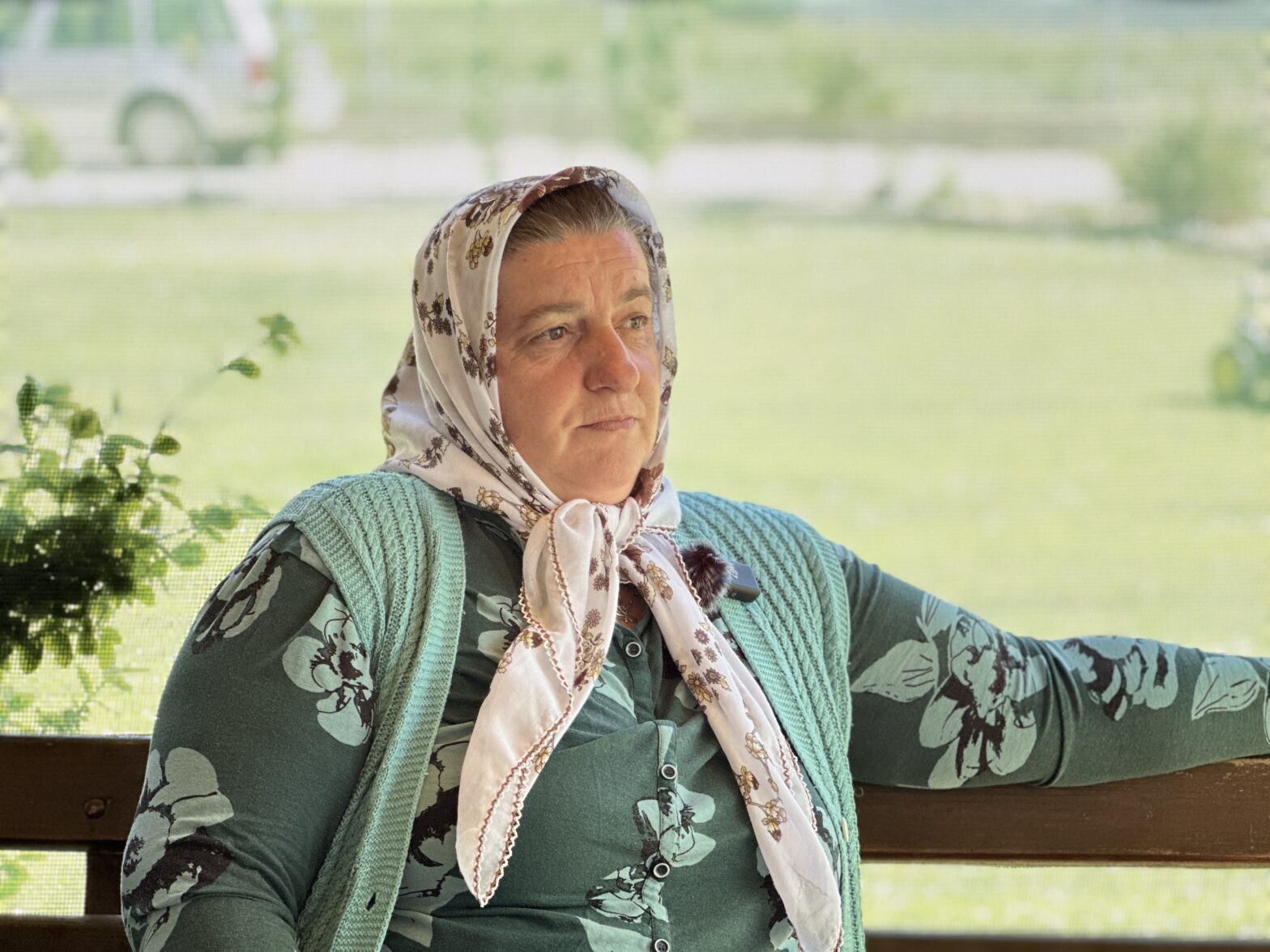
By 1995, the small mining town of Srebrenica, in eastern Bosnia and Herzegovina, had already endured a terrible 3 years of siege amid the Bosnian War.
Before the war began, 73% of the town’s population were Bosniaks and 25% were Bosnian Serbs. But, as the war progressed – and in the wake of Republika Srpska ethnic cleansing campaigns throughout 1992 and 1993 – more and more Bosniak civilians in eastern Bosnia fled to Srebrenica, seeking help in what the United Nations (UN) had declared a designated Safe Area.
The population of Srebrenica swelled from 9,000, to 70,000.
In 1993, General Phillipe Morrillon of the UN visited Srebrenica. After seeing the horrific conditions in the town, and after not being allowed to leave by the desperate public, Morrillon declared to the Bosniak people assembled: “You are now under the protection of the UN forces. I will never abandon you.”
The presence of UN peacekeepers in the area did nothing to deter Republika Srpska’s desire to take Srebrenica, seeing the town as strategically important to their operations.
In March 1995 the political leader of the Bosnian Serbs, Radovan Karadzic, ordered his forces to, “create an unbearable situation of total insecurity with no hope of further survival or life for the inhabitants of Srebrenica.”
Serb troops blockaded civilians inside the town, allowing no food or water to enter for months. Supplies ran low. Residents began to die of starvation.
Then the Serb troops advanced.
From 6 July 1995, Serb forces intensified their siege. Shelling continued for days, causing panic among the residents and forcing tens of thousands to flee to the nearby town of Potocari where a UN base was located.
Some peacekeepers were taken hostage, while Serb forces demanded that Bosniak soldiers hand over their weapons in exchange for safety.
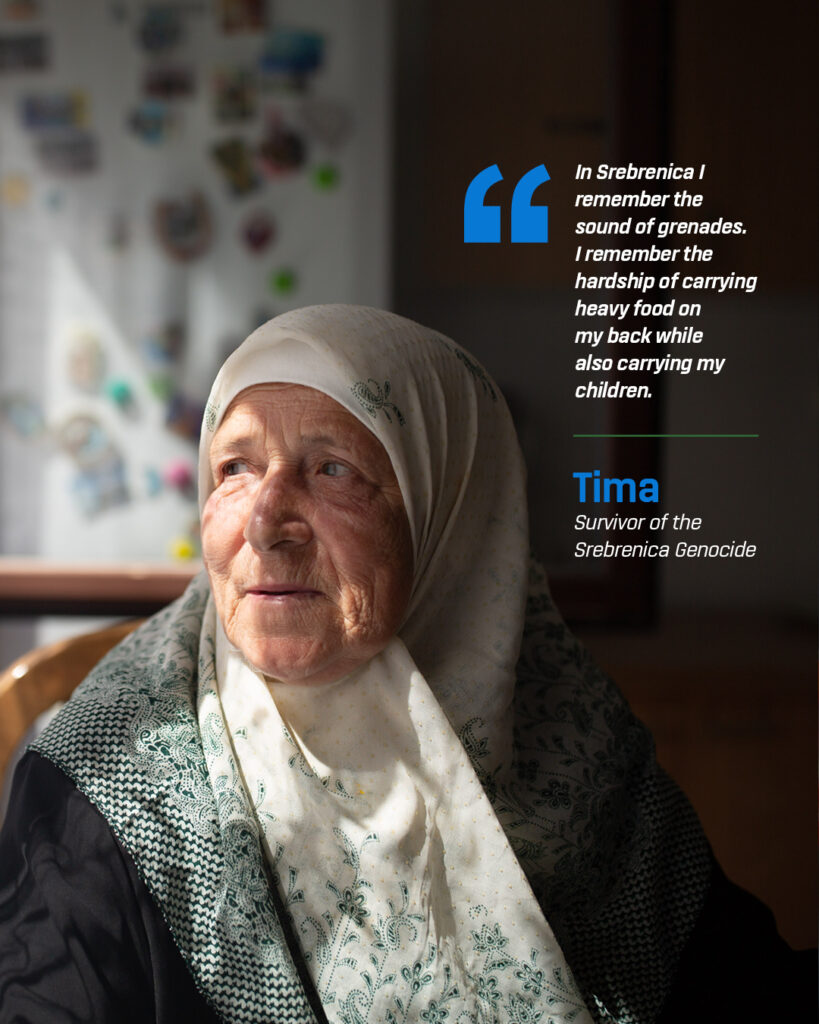 11 July
11 July
On 11 July, the Bosnian Serb military leader Ratko Mladic walked into Srebrenica and, in a statement recorded on film by a Serb journalist stated:
“We give this town to the Serb nation. The time has come to take revenge on the Muslims.”
By now, there were up to 25,000 Bosniak civilians congregated around the UN base in Potocari, all desperately trying to reach safety. Conditions were horrendous, with very little food or water available, and no protection from the oppressive July heat.
Serb soldiers began mingling with the crowd, causing more panic. In later testimonies, the UN peacekeepers described it as “a chaotic situation”, with witnesses reporting seeing Serb soldiers terrorising Bosniak civilians.
As night fell, the horror continued. Soldiers would pick people out at random from the crowd. Some would return, others never did. Throughout the night, they raped women and girls and murdered dozens of men and boys.
That night, a huge group of 10,000 Bosniak men and boys fled through the forests around Srebrenica, trying to reach the free city of Tuzla – more than 60 miles away.
Soldiers pursued and captured thousands of these men – some were killed in the forest, others were forcibly moved elsewhere. In some instances, soldiers would force fathers to call out for to their sons, knowing their child would be in grave danger if they emerged from the trees.’
12 – 13 July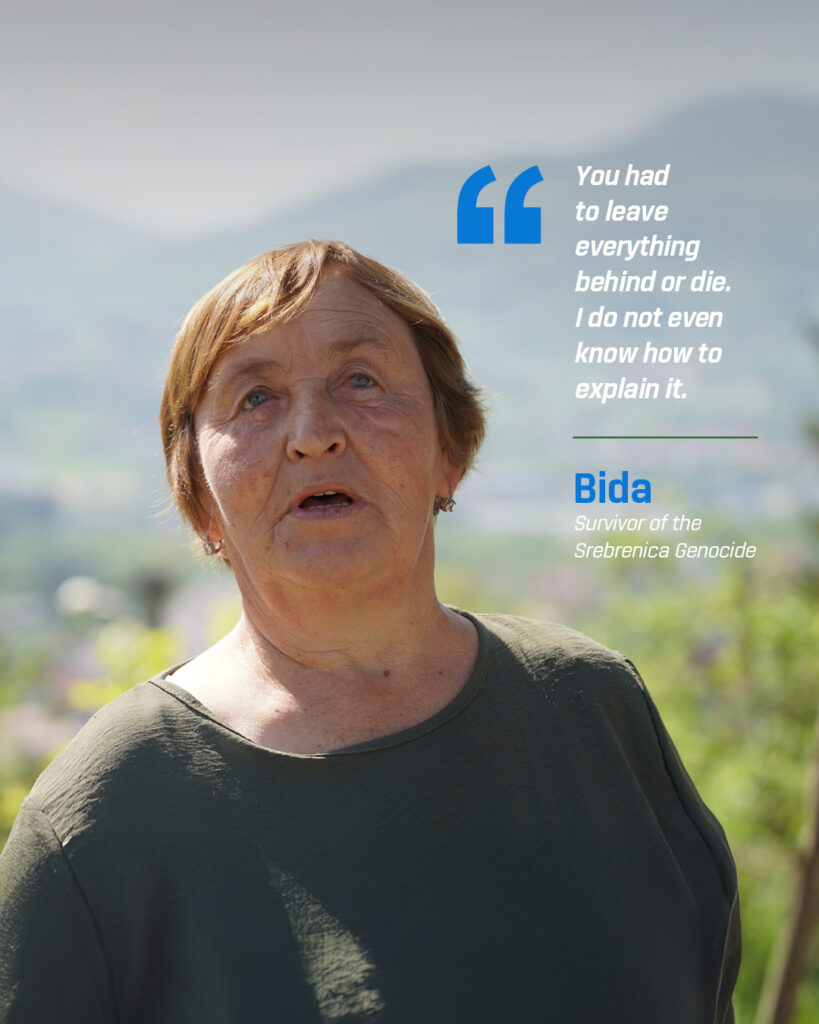
On 12 July, the buses started to arrive.
As UN peacekeepers watched, soldiers began to separate women, girls and boys under 12 from the others and forcing them onto buses.
The buses were described as overcrowded and unbearably hot. Those on board had no idea where they were being taken.
Over the next 2 days, more than 20,000 women and children were sent to Bosniak-held territory, eventually arriving in Tuzla, where a camp had been established.
Those left behind – men and boys aged 12 to 77 and so considered of age to fight – were taken for so-called ‘interrogations’.
Some were killed on the spot. Most were forced onto buses and transported to holding sites and concentration camps.
By the end of 13 July, there were almost no men or boys left. And days later, UN soldiers reported that no Bosniaks at all remained in the town of Srebrenica.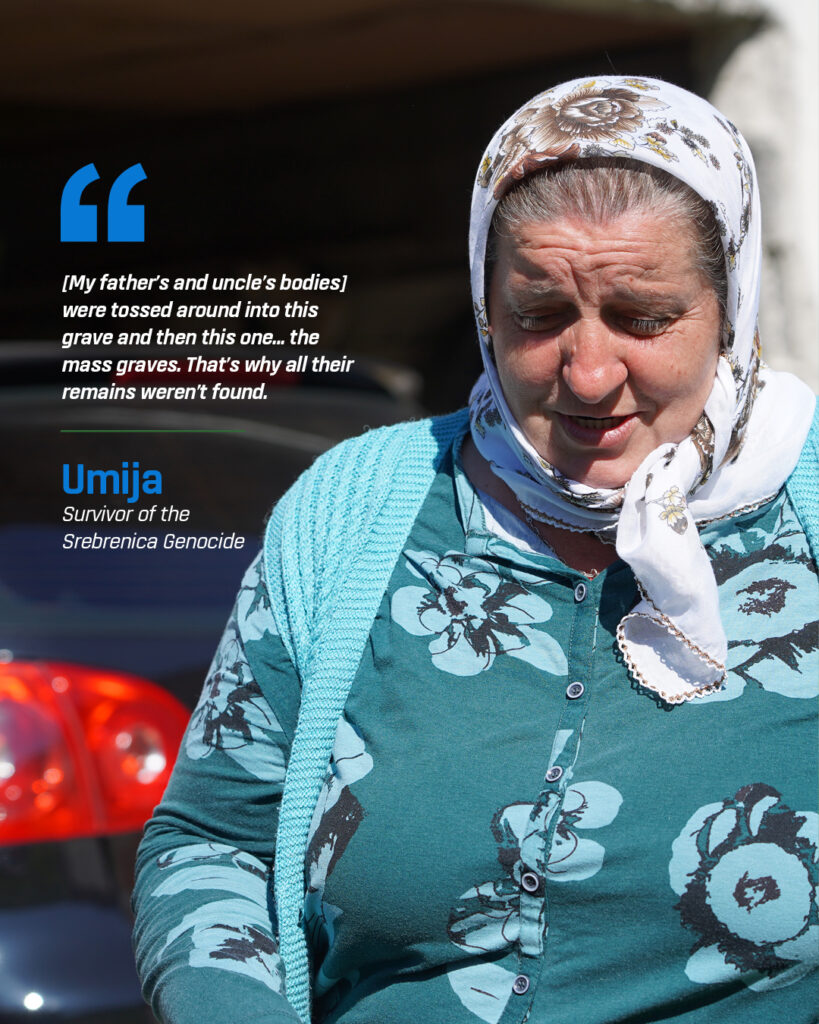
14 July
In what would become the largest massacre on European soil since the atrocities of the Holocaust, the soldiers began their mass executions of the men held in Bratunac.
Thousands were murdered. Some individually, others in groups. Their bodies were then pushed by bulldozers into mass graves near the killing sites. There are horrifying reports of some being buried alive, while remains found later recovered show signs of torture.
Months after the massacre, soldiers attempted to cover up their crimes by scattering the remains across different mass graves. The Srebrenica Memorial Centre reports that remains of those murdered at Srebrenica have so far been found in 94 mass graves across eastern Bosnia.
In court proceedings that took 24 years to complete, the International Criminal Tribunal for the former Yugoslavia that the mass murder that took place at Srebrenica was beyond all reasonable doubt a genocide. The trial, which ran from 1993 until 2017, saw 161 people indicted for their involvement in the genocide.
At the time of writing, we know 8,372 Bosniak men and boys were executed from 13 July to 19 July 1995. It is estimated that more than 1,000 more remain unaccounted for.
